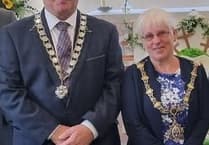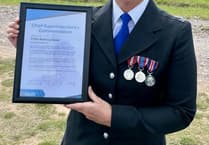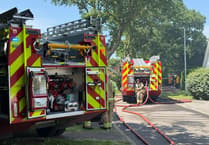Written by Brian Oldham
— George Bouchier Worgan (1757-1838) —
In 1994 the Fellowship of First Fleeters affixed a small plaque to a headstone in St Martin’s Churchyard, Liskeard, which read ’George Bouchier Worgan Sailed First Fleet 13-5-1787 Died 8-3-1838’. After four years training Worgan had joined HMS Sirius as Fleet Surgeon at the age of 22.
The Broadwood Archive Services records show that Worgan purchased a table top piano, with the sound of a harpsichord, from them on April 10th 1783. In his book ‘Australia Bound’, Martyn Brown wrote ‘George Worgan, surgeon on the Sirius, entertained on his piano’. It’s likely that this was the first piano to be heard in Australia and it’s recorded that, when Worgan eventually returned to England in 1791, he left it with his friend Mrs Elizabeth McArthur who had settled in the Colony. The full story is documented in the Edith Cowan University Museum in Perth, where Worgan’s Broadwood is currently stored.
On May 13, 1787, a fleet of eleven ships, including the Sirius, sailed from Portsmouth. Their voyage lasted just over eight months and covered more than 15,000 miles until they arrived in Botany Bay on the East coast of Australia. Worgan was with the first landing party and they soon encountered the native Aboriginal people, who wanted to know the gender of these long haired white skinned strangers. In his journal, Worgan wrote ‘As it was not possible for us to satisfy their inquisitiveness by the simple words yes or no, we had recourse to the evidence of ocular demonstration!’ Worgan’s second sailing to Australia, in 1789, was delayed when the Sirius was wrecked and he and the crew spent a year on Norfolk Island, in the Pacific Ocean, until they were rescued and their journey continued.
Worgan married Mary Lawry (1764-1846) in St Martin’s Church, Liskeard, in 1793, they had two sons and one daughter. He then put into practise his ‘theoretical farming methods’, firstly at Bray in Morval, then at Glynn in Cardinham. Both ventures made considerable losses which resulted in Worgan being declared bankrupt in 1806. Despite these failures he was approached by the Great Britain Board of Agriculture to produce a survey of agriculture in Cornwall. His first attempt was rejected so he recruited three amateur farmers, two Parsons and an Admiral, to help him revise the survey. It was eventually published by the Board in 1811, entitled ‘General View of the Agriculture of the County of Cornwall’.
1811 was also the year that the Anglican Church founded the ‘National Society for the education of children of the poor in accordance with the teaching of the Established Church’. Worgan was appointed Headmaster of the National School for Boys, which was built on the corner of Castle Street and Castle Hill, opposite Castle Park in Liskeard, in 1813. The school was short lived and closed in 1820.
In 1836 Worgan built Wadeland House on New Road, Liskeard, and a small cottage alongside, probably for an employee, now known as ‘Daniel’s Cottage’. Both are Grade II listed, as are the front wall and gate piers. Worgan had little time to enjoy his new property as he died on March 4th 1838, the cause of death was given as apoplexy, although some local writers have given the cause as ‘suicide by hanging’, but I’ve found no evidence of this. As well as careers involving the Navy, Agriculture and Teaching, Worgan found success as an inventor of farming implements and could be seen demonstrating them at Agricultural Shows across the county. For these inventions he would have drawn on his training while apprenticed to James Sise, Citizen and Wheelwright of London; Sise paid the duty on Worgan’s apprentice indenture on September 25, 1772, when Worgan was aged fifteen.
Brian Oldham is a Honoured Burgess of Liskeard and author of ‘A Peek into Liskeard’s Past’, which has sold over 500 copies and raised over £2,000 for Liskeard & District Museum, it is still available from The Book Shop in Barras Street, and the Museum, for £9.99.


.jpeg?width=209&height=140&crop=209:145,smart&quality=75)

